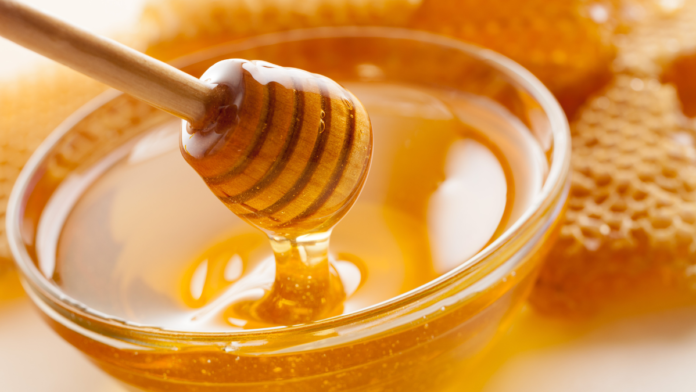Get introduced to “mielado.” A lovely term, which is deeply rooted in Spanish cultural heritage, that makes one think of golden honey and precious moments spent over delicious snacks. Yet mielado is more than just a good meal, it shows how history has been intertwined with traditions and communities. So let’s delve into the origins and symbolism behind mielado, unraveling its cultural implications and understanding why it epitomizes togetherness among Spanish-speaking nations. Thus select your favorite treat, and let’s plunge into language meets taste bud land!
Introduction to Mielado and its significance in Spanish culture
Mielado – a word that frolics on lips and arouses sweetness in all aspects. This cherished delicacy represents more than just food for thought; rather it is an ode to nature’s abundance as seen in Spain. Dating back from ancient times up until now, various people still cherish mielado for different reasons. Whether it be eaten straight out of the jar or used as an ingredient in traditional recipes, knowing its cultural importance will enhance our relationship with this amber substance. As we take you through this fascinating world about mielado we will explore some things that make it entrenched within Spain.
The History of Mielado: From Ancient Times to Modern Day
For centuries past till date mielado has deeply been connected with Spain’s history being traced back to ancient civilizations. Honey usage goes back millennia, evidenced by prehistoric cave paintings found everywhere.
With time, mielados adopted diverse forms enjoyed by many groups. In medieval Spain however much; sweet dishes were incomplete without them since they were used at once for cooking both savory and sweet dishes. Many people fell for its unique flavor.
By the eighteenth century, artisans had begun approaching mielado making as an art form; they experimented with different techniques and recipes focusing on its adaptability.
Because of this, it is still a treasured delicacy in Spain today where modern production techniques have made it more available to the masses but still retaining age old traditions that pay homage to its historical roots. It’s clear that through ages mielado has been passed on from generation to generation gathering itself into the tapestry of Spanish cuisine heritage spanning from ancient days till now.
The Process of Producing Mielado: From Beehives to the Final Product
The creation of mielado is an interesting process that starts within nature. A beekeeper ensures his bees are healthy so they can produce quality honey. Busy bees collect nectar from colorful flowers which they then turn into food.
When fully ripe, honey may be removed by beekeepers using up-to-date or conventional means. To separate impurities while preserving the richness these drops are filtered out.
Then, honey becomes heated gradually over low heat. This leads to enhanced sweetness and viscosity of a syrup thereby defining mielado which requires careful attention because overheating can change its inherent properties.
Lastly, this heavenly mixture is placed in bottles by these skillful artists to invite you to taste their works of art. Each bottle is not just a product but also centuries-old tradition passed down from one generation to another meaning Spanish culture. The essence and sweetness of life are preserved in each drop we savor “Mielado.”
Culinary Uses of Mielado; Traditional Dishes and Recipes
Spanish cuisine has embraced mielado as a favorite ingredient due to its rich sweetness which adds depth and flavor to different traditional dishes.
One popular way of using mielado is in desserts where it forms an irresistible glaze that enhances the taste of flan or churros. It can also be paired with fruits such as figs or pears because of its syrupy consistency.
Mielado can also come out shining in savory dishes. Chefs often incorporate it into marinades for meats, giving grilled chicken or pork a delightful caramelized finish.
Bakers also love using mielado when making bread or pastries; this gives them the dough’s softness and subtle sweetness that will capture your palate somehow.
No celebration feels complete without mielado-infused treats at the table—think sweet empanadas bursting with fruit preserves mixed with this golden delight! Each bite tells stories of culture and history through its unique flavor profile.
Cultural Significance of Mielado: Celebrations, Folklore, and Superstitions
Spanish culture holds a special place for mielado which is deeply rooted in festivals and local traditions. Sharing sweet offerings of mielados among family members symbolizes abundant harvests by many communities.
There is a lot of folklore about honeyed treats. The fact that consuming such a kind of food brings prosperity and good luck during certain lunar phases makes some people believe in it while others don’t think so.
Moreover, recipes made from past generations are handed down to other generations through families. Hence, you will find families having passed recipes made with stories handed down from generations back on their shelves.
Sometimes superstition comes in as well. For example, pouring honey on the floor means there will be forthcoming joy or marriage proposals. During celebrations some use decorations shaped like honeycombs to keep off negativity within the minds of the people.
These rich cultural narratives elevate the humble mielado beyond mere food; they connect people through shared stories and beliefs that span centuries..
Mielado is not merely a word; it epitomizes a sweet life. It goes back to its roots that we can explore through tradition. From ancient civilizations to modern culinary creations, mielado has always had an appeal that it still holds today.
The complicated process involved in making mielado demonstrates an age-old association of humans with nature. Every drop tells a story, meticulously crafted from beehives all the way to our kitchens. The versatility of mielado in recipes showcases its ability to enhance flavors while adding depth to traditional dishes.
Beyond taste, mielado is interwoven in the culture’s celebrations and folklore. It is not only an ingredient but also a symbol with hidden meaning which unites people during celebrations or offers comfort through old superstitions.
Its health benefits add another dimension worth exploring. A combination of good nutrition and taste makes food products containing honey such as mielado deserve their place on our dining tables.
While different cultural interpretations are discovered globally, one thing remains clear: embracing miele means enjoying life’s sweet moments. So whether you drizzle it over breakfast or put it into your favorite dish, may this delectable nectar make your daily experiences richer and closer to Spanish heritage than ever before and more than that too.




